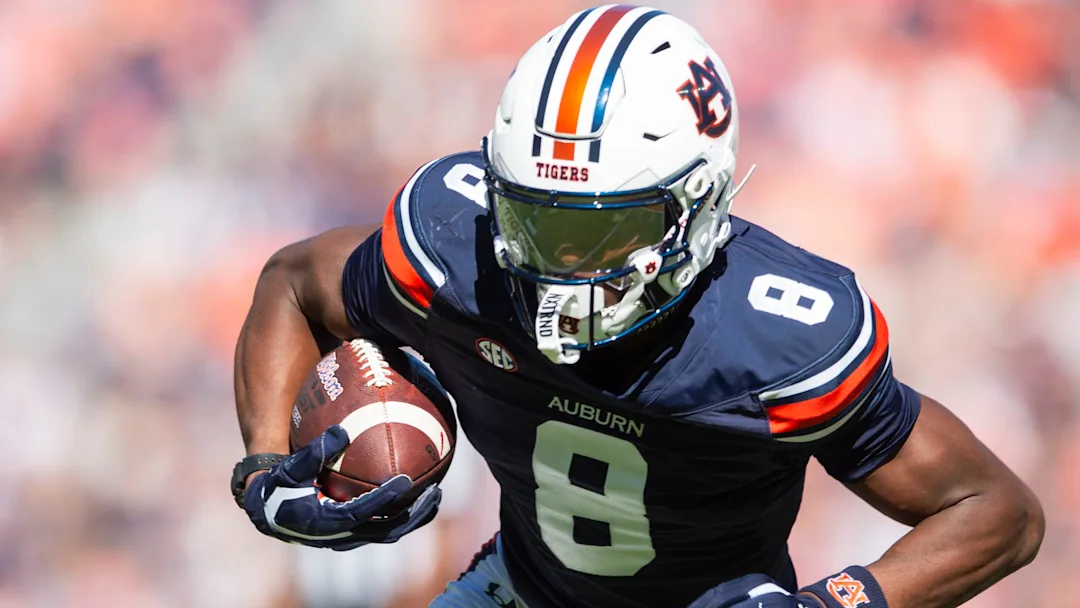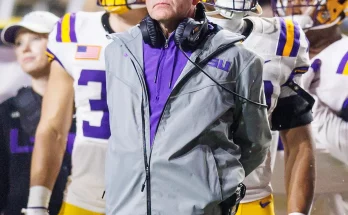When it comes to college football, the wide receiver position is often a defining factor in a team’s offensive success. This season, Auburn University has made a remarkable statement with its wide receiver corps, earning high praise from Pro Football Focus (PFF), a leading analytics and grading organization in football. PFF recently ranked Auburn’s wide receiver group among the nation’s best, a recognition that speaks volumes about the talent, depth, and potential of the Tigers’ receiving unit. This accolade doesn’t just highlight individual talent but underscores the collective strength that Auburn has built through meticulous recruiting, development, and strategic play-calling. Let’s delve deeper into why Auburn’s wide receivers are garnering such national attention, what this means for the team, and how this elite status shapes the Tigers’ season outlook.
Auburn’s wide receiver corps stands out for several reasons. First, the sheer talent level on the roster is impressive. Auburn has successfully recruited a mix of explosive playmakers, reliable route runners, and physically dominant athletes who can challenge defenders in every aspect of the game. This balance of skill sets creates a multi-dimensional receiving group that can adapt to various offensive schemes and defensive looks. PFF’s ranking is a testament to how these receivers have performed in both statistical output and advanced analytics, which evaluate routes run, catch efficiency, yards after catch, contested catches, and more nuanced elements that often get overlooked in traditional stats.
One of the reasons Auburn’s receivers are so highly rated is their ability to consistently create separation from defenders. PFF’s advanced metrics emphasize route running and separation, areas where Auburn’s receivers have excelled. This ability to get open is crucial in college football, where defenses are faster and schemes more complex than ever before. The receivers’ proficiency in running crisp, precise routes enables the Tigers’ quarterback to make quick, accurate throws, reducing the risk of turnovers and increasing scoring opportunities. It also opens up the field for Auburn’s dynamic running game, as defenses must respect the receiving threat, preventing them from stacking the box.
Depth is another factor that elevates Auburn’s wide receiver corps. Injuries, fatigue, and the grind of a long season require a team to have reliable options beyond its starters. Auburn’s coaching staff has built a receiver group where the drop-off between starters and backups is minimal, allowing the offense to maintain high efficiency no matter who is on the field. This depth also fosters healthy competition in practice, driving each receiver to improve constantly. It gives Auburn the flexibility to deploy multiple receiver sets and adjust game plans on the fly, exploiting defensive weaknesses and creating mismatches that favor the offense.
The chemistry between Auburn’s receivers and their quarterback is a crucial element behind the success of the receiving corps. Football is a team sport that requires synchronization, especially between quarterbacks and receivers. The Tigers’ quarterback has demonstrated a strong connection with his targets, reading defenses effectively and delivering the ball with precision. This trust and timing have allowed receivers to maximize their talents, turning routine catches into explosive plays. PFF’s analytics reflect this synergy, showing high passer ratings when targeting Auburn’s wideouts, an indicator of the group’s effectiveness in game situations.
Moreover, Auburn’s wide receiver corps is marked by its versatility. These athletes can line up in various positions — outside, slot, or even occasionally in the backfield — giving the coaching staff a tactical advantage. This versatility complicates defensive game planning and allows Auburn to disguise plays, keeping opponents guessing. Some receivers are adept at making contested catches, crucial in red zone situations, while others excel at yards after catch, turning short passes into long gains. This mix of skills makes the Tigers’ receiving corps a complete unit that can execute a diverse playbook.
The importance of coaching and player development cannot be overstated in this discussion. Auburn’s staff has worked diligently to refine the receivers’ techniques, from footwork and hand placement to reading defenses and adjusting routes in real-time. The program’s commitment to player development has transformed raw recruits into polished athletes ready to compete at the highest collegiate level. PFF’s rankings take into account not only raw talent but also how players improve over the season and their consistency in performance. Auburn’s receivers have shown significant growth, becoming more reliable and dangerous as the season has progressed.
In terms of impact on Auburn’s overall team success, having one of the nation’s best wide receiver corps provides a significant strategic edge. It forces opposing defenses to prioritize coverage on multiple threats, often leading to favorable matchups elsewhere on the field. This dynamic opens up Auburn’s run game and allows for creative offensive play-calling. Defenses must respect the threat posed by Auburn’s receivers, which can alter their alignment and assignments, creating opportunities for big plays in all phases of the offense.
The recognition from PFF also has recruiting implications for Auburn. High rankings by a respected analytics organization serve as a beacon to future recruits who want to join a program known for developing top-tier receivers and providing a platform for national exposure. This elite status creates a virtuous cycle, attracting more talented prospects who want to be part of a winning culture and take advantage of the coaching and development resources at Auburn.
Looking forward, sustaining this elite status will be a challenge that Auburn embraces. The nature of college football means roster turnover is constant due to graduations, transfers, and the NFL draft. However, Auburn’s ability to maintain depth, develop talent, and implement effective offensive schemes will be key to preserving their standing as one of the nation’s best wide receiver groups. The coaching staff’s recruiting efforts and player development programs will continue to be critical in this endeavor.
In conclusion, Auburn’s wide receiver corps earning a top national ranking from PFF is a reflection of a well-rounded, talented, and deeply committed group of athletes and coaches. Their ability to consistently perform at a high level, create separation, maintain depth, build chemistry with the quarterback, and display versatility has set a new standard of excellence for the program. This recognition not only boosts Auburn’s reputation in college football but also positions the Tigers for continued success on the field. As the season unfolds, all eyes will be on Auburn’s receivers to see if they can live up to and even surpass the high expectations set by PFF and fans nationwide. The future is bright for Auburn’s wide receiver corps, and their elite ranking is just the beginning of what promises to be an exciting journey ahead.



